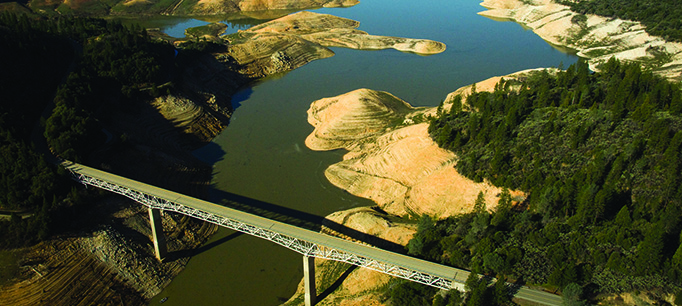
We marked the launch of the PPIC Water Policy Center by convening a panel of leading experts to discuss key issues in state water policy. Participants were Richard Frank, director of the California Environmental Law and Policy Center at the UC Davis law school; Matthew Rodriquez, secretary of the California Environmental Protection Agency; and Karen Ross, secretary of the California Department of Food and Agriculture. Moderating the conversation was Lois Kazakoff, deputy editorial page editor at the San Francisco Chronicle. We invite you to watch the full presentation and discussion.
Before the panel discussion, I gave a brief opening talk called “Five Things You Need to Know About Water.” Here is a summary of the five points:
Water is complicated. There are no silver bullet solutions to California’s water problems—whether it be desalination, new reservoirs, or conservation. We need to be thinking about combining a lot of different tools and strategies. This also means that there are almost always unintended consequences, even for solutions that seem like no brainers. As an example, there’s a lot of public interest—and funding—now available for increasing local drought resilience by reusing treated wastewater. However, more water reuse often means less treated wastewater gets returned to rivers and streams, where it provides important environmental benefits and supplies for downstream communities. This doesn’t mean we shouldn’t be doing these projects, but it does mean we need to be aware of the consequences and trade-offs.
We have to go after more than the low-hanging fruit. The low-hanging fruit types of solutions tend to be incremental and piecemeal in nature. This is fine for things that can change incrementally, like improving water use efficiency. But some tough problems—like meeting the co-equal goals of water supply reliability and ecosystem sustainability in the Delta—will require tough, expensive, and politically difficult solutions.
Water solutions almost always have both winners and losers. This is obvious in a case like the Delta, where it’s simply not possible to find a fix that will make everyone better off. That’s because every available option involves tradeoffs in which at least one party doesn’t fare as well, whether it’s farmers in the Delta, farmers in the San Joaquin Valley, urban residents south of the Delta, or the Delta’s native fish and wildlife. It’s also true for projects that people like to think of as win-win, such as flood protection projects that move levees back to make more room for rivers. These projects also improve wildlife habitat, but they usually cost more than traditional flood control projects. As a society, we can aim for solutions that get the most benefits per dollar spent, but we also need to consider how to soften the blow if some groups are disproportionately bearing the costs.
Crises create hardship, but also opportunity. In particular, crises create openings to achieve major reforms that might not be possible in normal times. Thanks to a string of crises—and to bold action by leaders at the local, state, and federal levels—California is now experiencing a period of extraordinary change in water policy: In 2007, in the wake of Hurricane Katrina in New Orleans, we enacted legislation that doubled the federal standard of flood protection for cities in the Central Valley. In 2009, in the third year of drought, we adopted a legislative package that required more conservation, better water use reporting, and a new governance structure for the Delta. In 2014, in the midst of a much more severe drought, we enacted historic legislation that empowers and requires local agencies to sustainably manage our threatened groundwater basins. Much work lies ahead to effectively implement all of these reforms, and more big changes will be needed in other areas, such as finding ways to fill critical funding gaps in our water system.
It’s hard work, but it’s not hopeless. We’ve been making progress in addressing some key challenges, including improving the reliability and quality of our water supplies, and preparing to weather droughts and floods. Perhaps the toughest—and most conflict-ridden—challenge we face in California water is reversing the decline of our native aquatic ecosystems, which have been failing despite several decades of well-intentioned environmental laws and investments. But even here, one can point to promising approaches. There’s the example of Putah Creek, where the reintroduction of natural, variable flow patterns—albeit with just a fraction of the water nature used to provide—has favored the return of native species. There’s also the example of the Knagg’s Ranch in the Yolo Bypass, where leaving fields flooded a little longer before planting rice is making it possible to fatten up young salmon before they make their way back to the ocean, giving them a better chance of survival. These are creative examples from the playbook of “reconciliation ecology,” a pragmatic approach to managing our ecosystems alongside continued human uses of water and land resources.
These five immutable facts about California water guide the work of our center. California needs to ground policy decisions in reliable, non-partisan, science-based diagnoses of problems and potential solutions. That’s how we—along with our research partners throughout the state—hope to contribute to a better water future.


